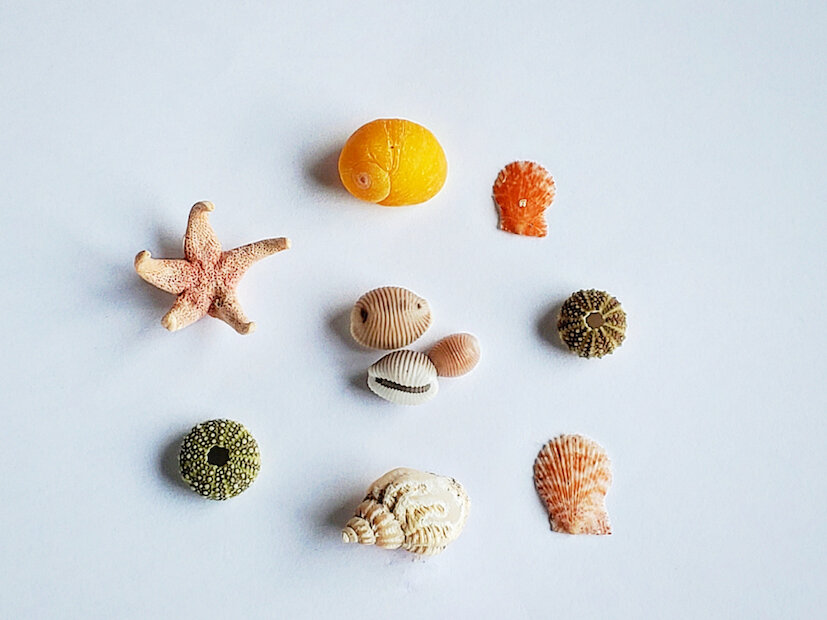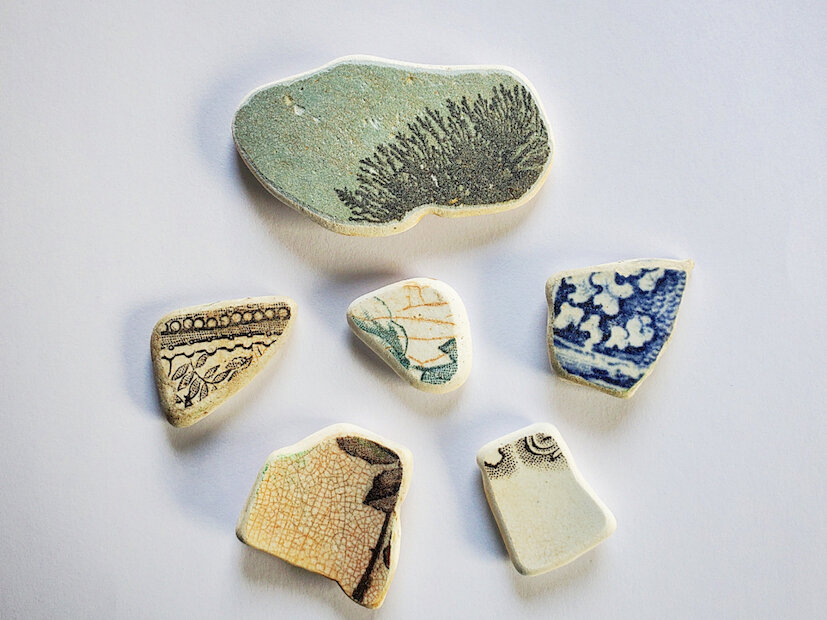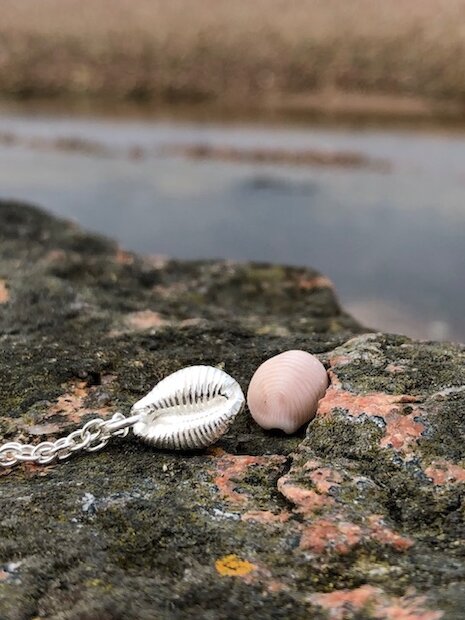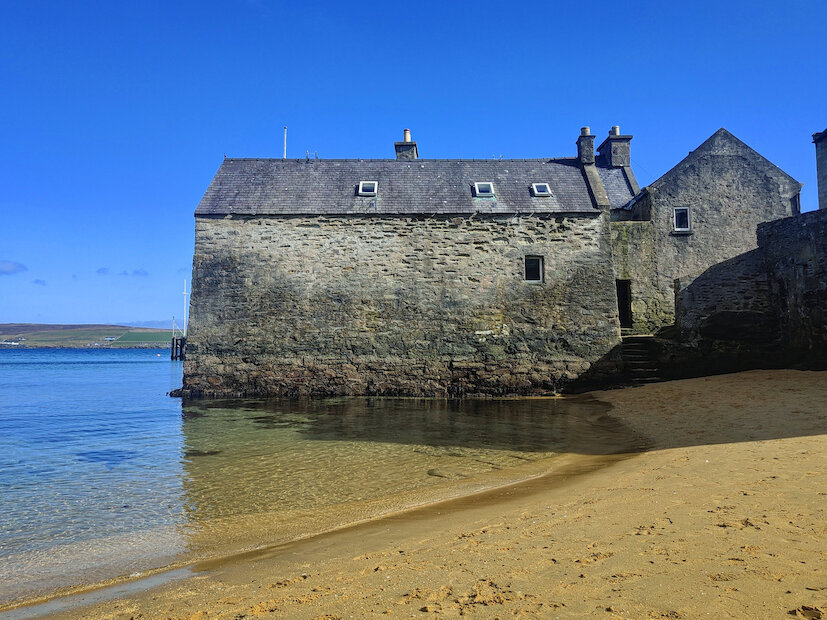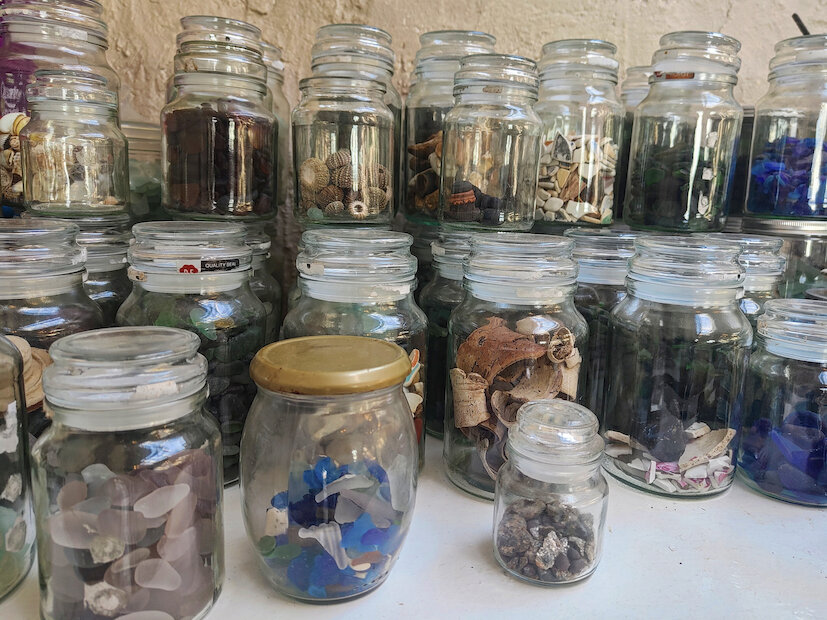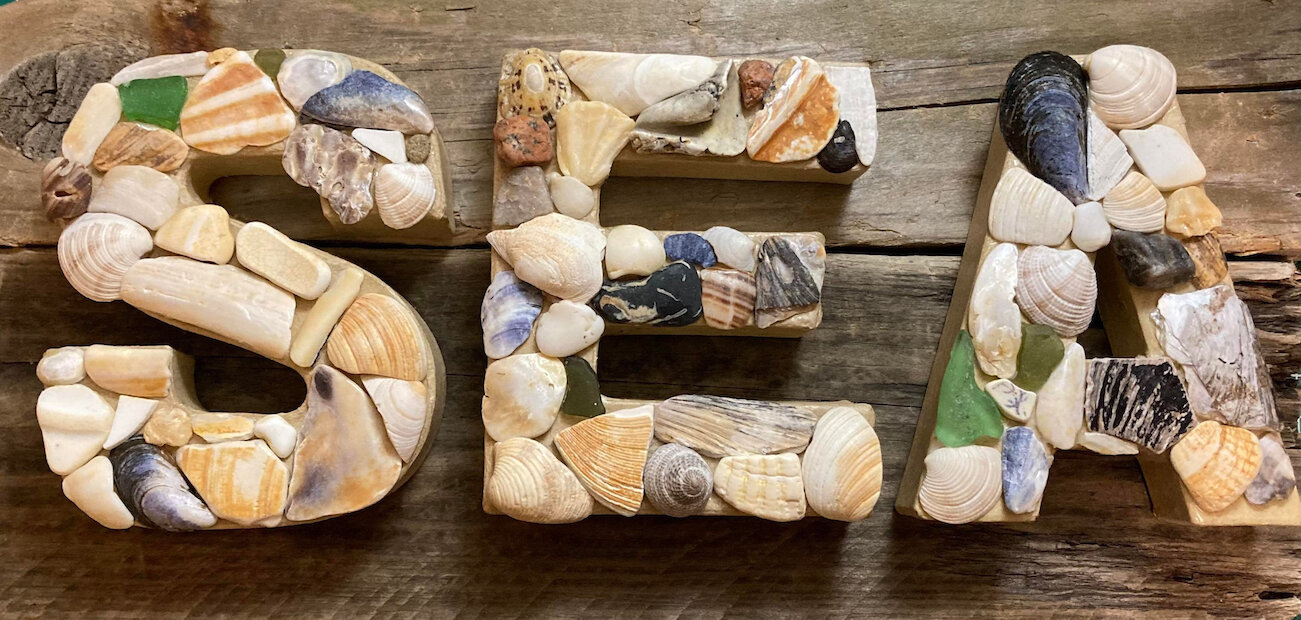I walked with Esmé Wilcock along the beach, our feet tracing the line of seaweed left by the retreating tide. There was little wind and the sun cast diffuse light through a thin layer of cloud, highlighting the shapes and patterns of the surrounding stones in gold. Every few steps she stopped to pick something up, showing me pieces of pottery or seaglass before placing them into her collecting bag.
Esmé has been coming to this beach her whole life. She explained that it is a place steeped in Shetland history, where boats and merchants came with the fishing trade but it is also a place that is part of her own history, somewhere she has visited since she was a child and a place she brought her own children.
It is her love for this beach, and Shetland’s incredible coastline, that inspires her work. "I have got a little bag of gems here," she says, reaching into her bag to retrieve a piece of pottery, its edges washed smooth by the sea.
"Each piece has a story. Somebody has eaten their dinner off this. I will use this, set it in silver, and it’s story will continue, and that is what I love most." She compared this to mass produced items, that people may keep for a short while then throw away.
